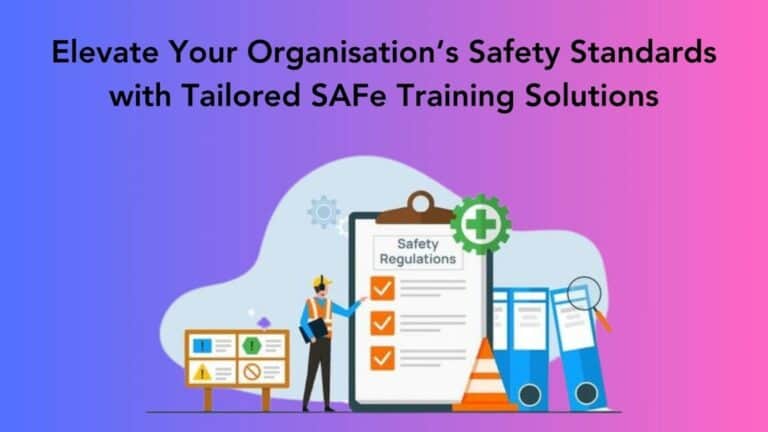7 Common Mistakes To Avoid In SAFe Training And Implementation
The Scaled Agile Framework (SAFe) has become widely adopted by organizations to successfully scale agile at the enterprise level. However, many teams struggle with safe training and implementation due to some common mistakes. Avoiding these pitfalls can set your SAFe adoption journey up for success.
Here are 7 common mistakes to avoid when undertaking SAFe training and implementation:
1. Not Having Executive Buy-In
Gaining complete buy-in from your executives and leaders is crucial before undertaking SAFe training. Without it, teams may resist changes and new processes. Ensure executives are invested in SAFe adoption and communicate its benefits clearly within the organization. Training and implementation without executive sponsorship often fail.
2. No Prior Agile Experience
Jumping straight into enterprise-level SAFe without building a basic agile experience can be overwhelming. Having teams that already follow agile practices like Scrum or Kanban helps kickstart SAFe adoption. Provide essential agile training first to build foundational knowledge. This incremental approach prevents teams from being deluged during a full-blown SAFe transformation.
3. Not Tailoring To Organization
SAFe is a framework, not a prescriptive methodology. Blindly copying another organization’s SAFe model rarely works. You need to tailor it to fit your organizational culture and existing processes. Analyze your structure and identify what needs to change to determine the optimum way to implement SAFe. Customizing for your context is vital.
4. Lack Of Commitment To Change
SAFe requires new ways of working that may seem uncomfortable initially. Without sincerely committing to embrace changes in mindset, policies, and practices, you cannot leverage their benefits. Leaders need to role-model desired changes, while teams must be willing to adapt. Making half-hearted attempts at adopting SAFe leads to failed implementations.
5. No Consistent Training
Inconsistent or partial SAFe training results in disjointed efforts that pull teams in different directions. Work with a certified SAFe partner to conduct multi-level training programs that provide in-depth knowledge systematically. Train teams together for alignment. Internal coaches can then provide ongoing support and reinforce learning consistently across the organization.
6. Ignoring Practical Implementation
Classroom workshops impart theoretical knowledge, but real progress happens only when applied on the ground. Hands-on coaching is crucial for putting SAFe principles into practice after training sessions. Set short-term milestones and implement changes in phases. Internal coaches must support teams in their day-to-day SAFe adoption journey.
7. Lack Of Communication
SAFe changes how software delivery teams operate. Failing to communicate continual updates during implementation breeds confusion and resistance that can derail progress. Leaders should proactively share progress, highlight early wins, and repeatedly clarify new processes and expectations. Active collaboration, transparency about timelines, expectations, and objectives, and managing stakeholder communications are key to driving successful change.
Conclusion
In conclusion, a steadfast long-term commitment and a practical training-driven approach are vital for effective SAFe adoption. Avoid these 7 common pitfalls during your SAFe Agilist certification and implementation journey to create a lean-agile enterprise that drives value delivery. With robust preparation, training, and communication, you can successfully unlock SAFe’s transformative power to achieve business agility. Managing change effectively is key to realizing the benefits of implementing this enterprise-level agile framework across your organization.





